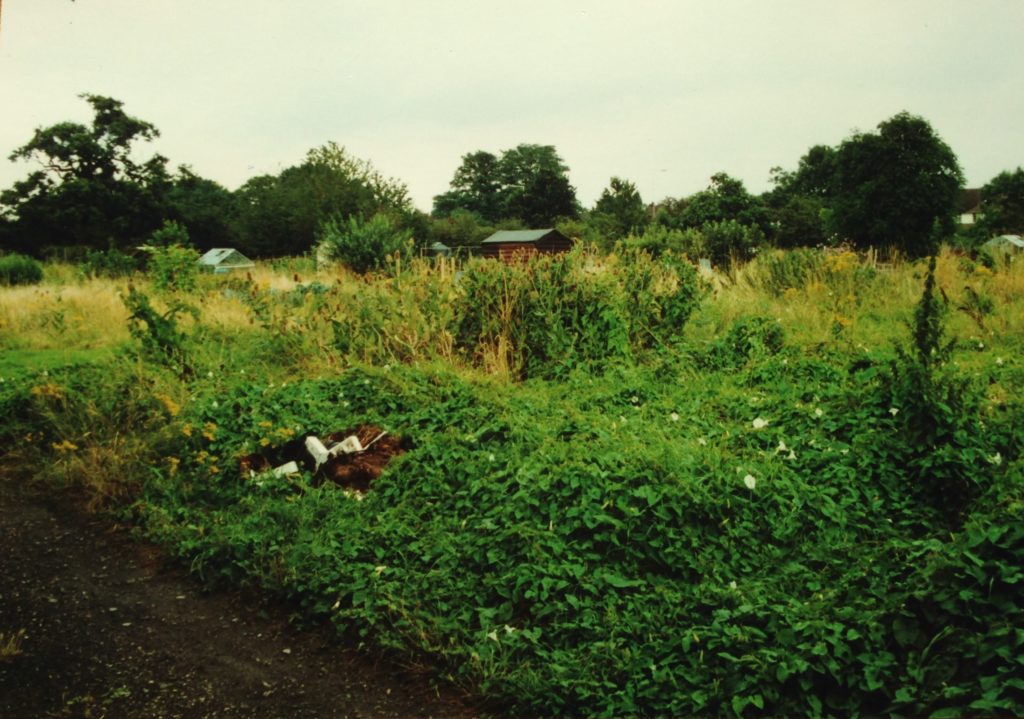
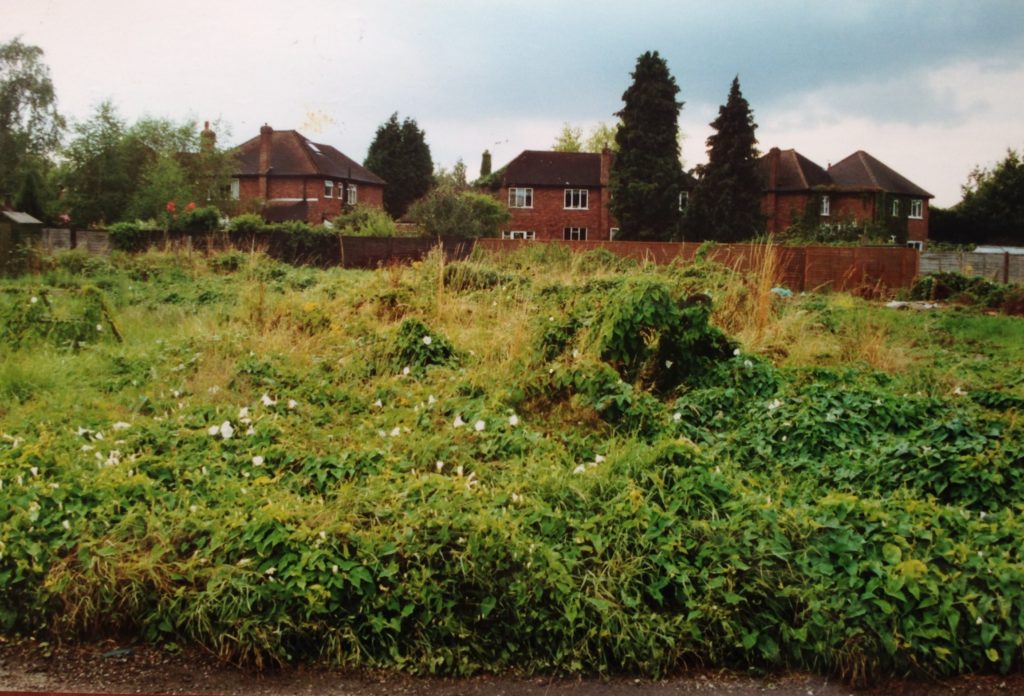
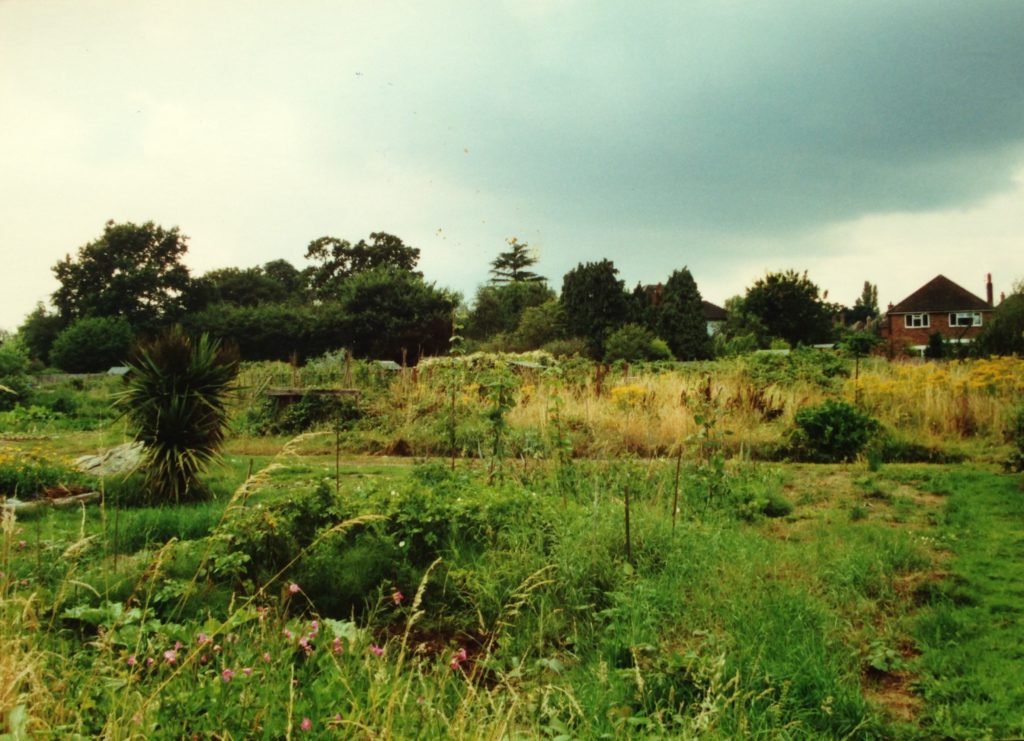
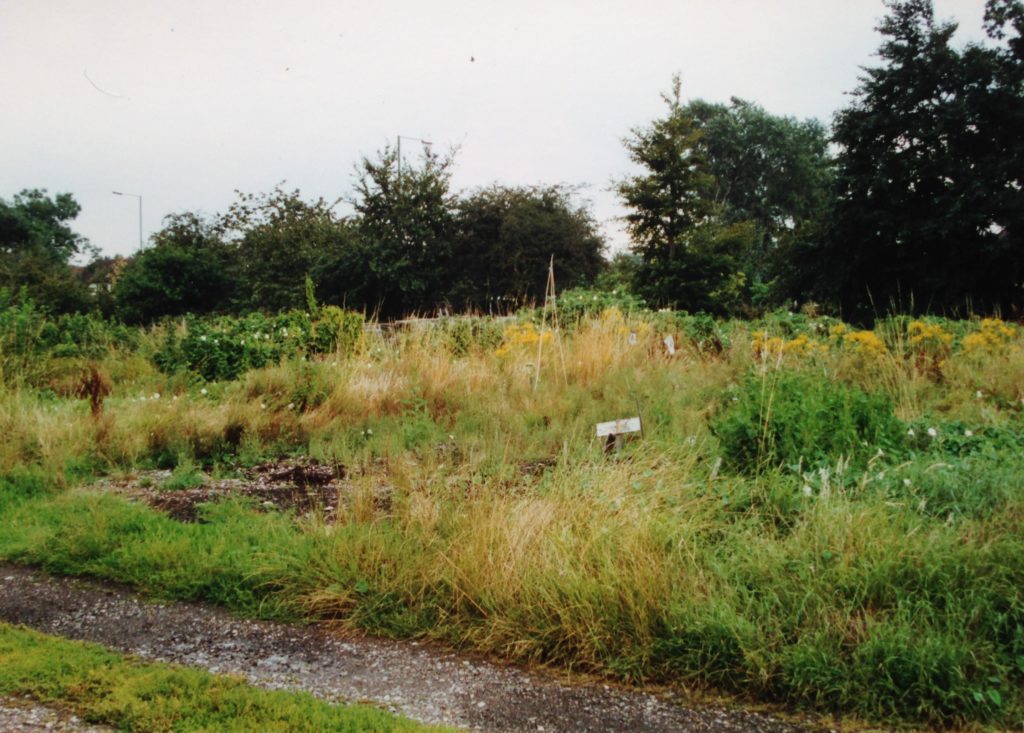
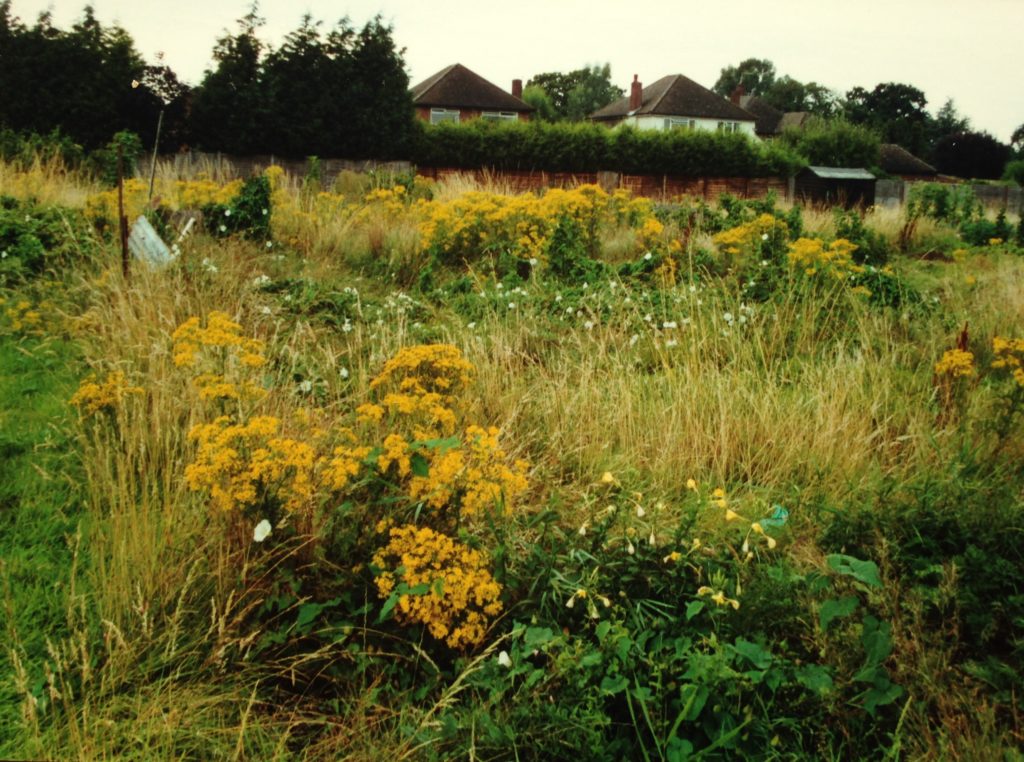
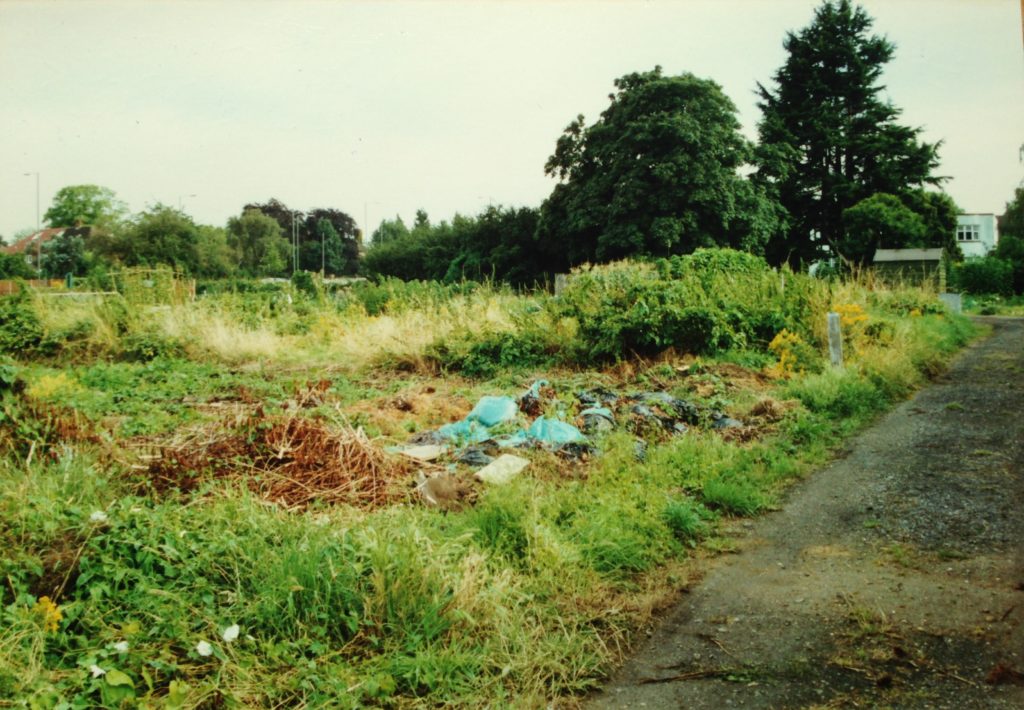
As mentioned at the 2015 AGM, Blackcurrant Gall Mite has been found on the allotments this year. They are a serious problem which can stunt the growth of the plants and can reduce fruit production.
Lifecycle of Blackcurrant Gall Mite
The mites are microscopic in size, about 0.25mm in length. They live inside the dormant buds and suck sap from the embryonic leaves. An infested bud may contain hundreds of mites. They breed within the buds from January to April and breed again from June to September.
In May the mites emerge from the buds and produce silk threads to climb along to spread to other healthy buds and plants. This process will continue throughout the summer and the mites will eventually overwinter in the buds.
The mites can be carried by the wind and also on the bodies of aphids so the risk of spread is quite considerable.
How to recognise it
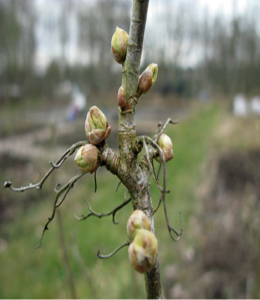 The first symptom is a round swollen bud; healthy buds are pointed in appearance. The buds may then fail to open or will produce distorted leaves if they do open. The problem is most obvious in winter and early spring.
The first symptom is a round swollen bud; healthy buds are pointed in appearance. The buds may then fail to open or will produce distorted leaves if they do open. The problem is most obvious in winter and early spring.
Why it is a problem
Infected buds often fail to open or will produce distorted leaves, stunted foliage and few or no flowers. The mites carry the virus responsible for blackcurrant reversion disease which stunts the plant and substantially reduces fruit production.
Where you are likely to find it
Primarily in blackcurrant plants but it can also affect other Ribes species; redcurrants, whitecurrants, gooseberries and many ornamental plants. The Jostaberry is a gooseberry/blackcurrant hybrid.
How to get rid of it
As soon as it is noticed prune out any stems where big bud mites are present and destroy them, burning is the best option, do not put them on your compost heap. If plants are badly infested they should be dug up and destroyed. This is best done in the winter when the mites are inactive to limit the spread of the infestation. In cases of light infestation the big buds should be picked off and disposed of as above.
Spraying with a sulphur formulation in May and June (when the mites emerge from the buds and migrate) can be effective. There are no chemical means of attacking the mite while it is in the bud.
Encourage natural predators like lacewings by providing food sources such as poached-egg plants (Limnanthes Douglasii).
If the plant is infected by blackcurrant reversion as a result of the big bud mite infestation then it cannot be cured and perhaps consider planting cultivars with resistance to the disease; such as Ribes Nigra ‘Ben Hope’ and ‘Ben Gairn’
Rats are a potential problem on allotments particularly in unturned compost bins.
Appearance
Lifecycle
Habits
Usually ground living and burrowing, but sometimes climbs
The preferred food is cereal and grain. They also love fat balls and seeds put out for the birds and will happily climb trees, bushes or up the leg of a wooden bird table to reach it
They will eat almost anything; fruits and berries that have fallen to the ground, discarded food, dog faeces, snails, insects, frogs, mice, carrion and much more
Habitat and movement
Brown rats will live in a large variety of different locations. In natural surroundings they like to burrow into banks, normally near a food source. However, humans have provided them with many habitats: sewers and drain systems, dark unused areas of garages and sheds, wood piles that are not being used regularly, under bushes, in tall thick grass, untended compost heaps or bins, appliances old furniture and rubbish that has been left outside, in holes or gaps under buildings
Rats tend to stay within a restricted area, provided there is sufficient food; their territory is usually small and within a 50 meter radius of the nest
If food is hard to come by a rat will travel quite a distance, up to 4 or 5 kilometres, every night in search of a tempting food supply
When venturing out of the nest rats will always follow the same routes, hence the term “rat runs”, and these soon become obvious
Brown rats are basically nocturnal. There are three main reasons why rats are seen during the day:
Controlling infestation
For a site such as ours eradication is difficult and any control methods are likely to have only a temporary effect unless used on a very regular basis. There are also cost and management implications.
Prevention is likely to be the best cure and good site maintenance routines are essential. All plot holders are responsible for keeping their areas tidy and using best endeavours to prevent infestation such as:
During a recent site inspection it was quite surprising how many fruit trees were looking quite sickly. It would appear that many are suffering with rust fungus of one form or another. The pear trees have European Pear Rust (orange & brown spots on the leaves) and the plums have Plum Rust (small yellow spots on the top of the leaf with tiny brown spots on the underside), both spread rapidly by means of airborne spores. Although most information suggests that fruit is not affected this does not apply if the infestation is severe or if it takes hold early in the season. Fruit may be under developed and fail to ripen or is totally inedible.
It is possible to treat with a chemical spray, although on a large tree this may not be practical. Myclobutanil (Systhane) in various forms such as Bio Systhane Fungus Fighter can be applied in July. However, good crop management is probably the best solution. Burn fallen leaves and fruit debris in autumn or take it off site for disposal elsewhere, this will reduce the number of spores laying dormant during the winter. Avoid over application of nitrogen fertilisers, this encourages soft growth which is more susceptible to the fungus. Maintain an open centre to fruit trees to allow good air circulation. As a general rule prune pip fruit trees in winter (apple and pear) and stone fruit in summer (plum and cherry).
Another common disease of fruit trees is Brown Rot; the skin of infected fruit will have a brown appearance with small raised light brown bumps. If fruit is left on the tree it will dry and shrivel completely. There is no chemical treatment available for brown rot. Infected fruit should be removed and destroyed as quickly as possible, do not leave rotting fruit on the ground.
It would seem if blight didn’t get your crops then rust or rot just might ….. Oh the delight of airborne fungus spores. There is much to do in autumn and winter, thank goodness the weeds stop growing for a while!